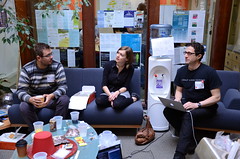 The Institutional Review Board (IRB) plays a crucial role in the process of approving and overseeing clinical trials. Unfortunately, the time required for protocol review is often an area of great frustration for all parties involved. In 2009, the Association for the Accreditation of Human Research Protection Programs, Inc. (AAHRPP) surveyed 196 of their client organizations, and found that the average time from protocol submission to approval by the convened IRB was almost 49 days.
The Institutional Review Board (IRB) plays a crucial role in the process of approving and overseeing clinical trials. Unfortunately, the time required for protocol review is often an area of great frustration for all parties involved. In 2009, the Association for the Accreditation of Human Research Protection Programs, Inc. (AAHRPP) surveyed 196 of their client organizations, and found that the average time from protocol submission to approval by the convened IRB was almost 49 days.
While there are many factors that contribute to these long review times, improvements can be made. Recently, the University of Maryland’s School of Medicine IRB has reported dramatic results:
Last March it took 35 days for a full Institutional Review Board (IRB) approval for a clinical trial from the University of Maryland’s School of Medicine, which reviews more than 1,000 applications annually. This March, IRB approval time dropped to 21 days, and just 13 days in February.
And those faster approvals were completed with a staff of just three full-time analysts and four coordinators, compared to eight full-time analysts at this time last year.
Reducing the time for investigators to gain IRB approvals required the School of Medicine (SOM) to streamline its business processes, retrain its staff and alter its hiring practices, to be able to do more with less. A key part of this paradigm shift was the development of new procedures and an investigator’s toolkit complete with essential documents, including up to 40 checklists and 30 worksheets that make the submission process more efficient.
Part of Maryland’s new procedures came from working with the Huron Consulting Group, who provide a free set of tools to help IRBs streamline their procedures. Huron will also be offering a free webinar on May 25th to discuss a model for improving IRB operations.





 For those of us interested in open science,
For those of us interested in open science,  The Institutional Review Board (IRB) plays a crucial role in the process of approving and overseeing clinical trials. Unfortunately, the time required for protocol review is often an area of great frustration for all parties involved. In 2009, the Association for the Accreditation of Human Research Protection Programs, Inc. (
The Institutional Review Board (IRB) plays a crucial role in the process of approving and overseeing clinical trials. Unfortunately, the time required for protocol review is often an area of great frustration for all parties involved. In 2009, the Association for the Accreditation of Human Research Protection Programs, Inc. (